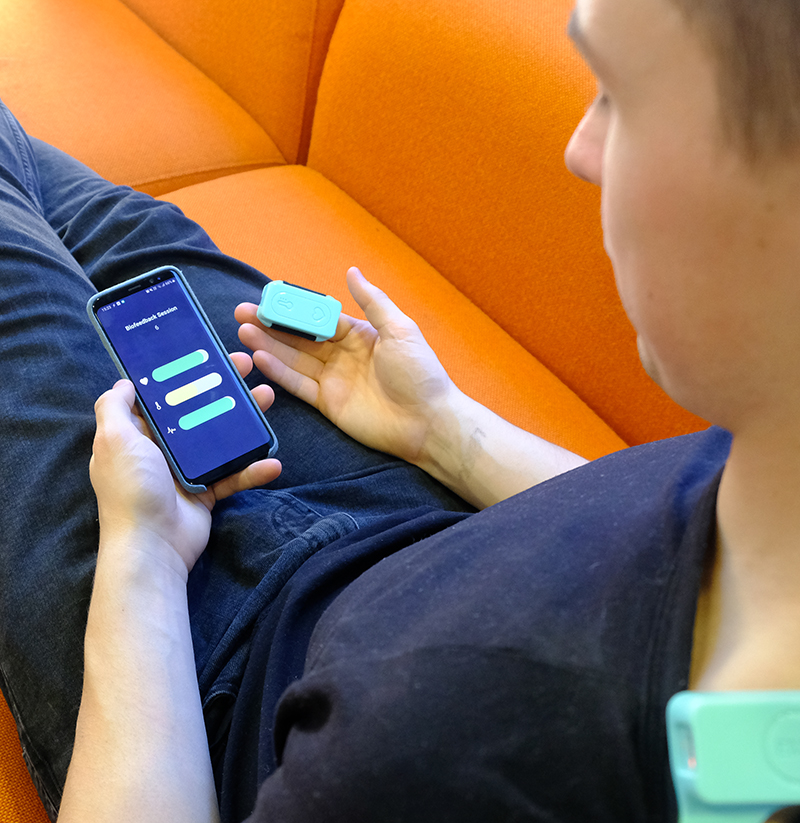
Norwegian scientists have developed an app that uses artificial intelligence (AI) to help combat migraines. A daily training session of 10 minutes with this app could reduce migraine attacks in a lot of patients, according to the researchers.
One in seven people suffer from migraines and one in a hundred suffer from chronic headaches. Traditional migraine medications help some people but often have side effects. This medication is in principle no longer a necessity when using the app.
Migraine prediction
“Disruption of the autonomous nervous system as a result of stress can provoke migraine attacks,” says Alexander Olsen of the Norwegian University of Science and Technology (NTNU). This university developed the app together with the Norwegian Migraine Center at St. Olavs University Hospital in Trondheim, Norway.
“When the nervous system is activated, a change in heart rate, muscle tension, and body temperature reflects this. Usually, we don’t have direct access to these changes. By using wireless sensors to monitor them, a user can effectively train himself to control them,” he states.
Kunstmatige intelligentie
The app receives data about someone’s physical processes via two physical sensors. It also contains a headache diary where the user logs their medication use and the duration, strength and where it is cetered. “We’ve built-in Artificial Intelligence (AI) so that the app can be tailored to the individual user,” says Cathrine Ro Heuch of Nordic Brain Tech, who built the app. “This artificial intelligence compares the information about the body’s signals with the migraine diary and then provides the patient with feedback in order to optimize their training. We have also added a game element, which allows the user to score points with their training. The aim is that the app will eventually be able to predict the attacks as well as their duration and intensity and location.”
Ten minutes of training per day
The user does a ten-minute training session every day. They place a sensor on their neck muscles to measure muscle tension. Another sensor goes on a finger to measure their heart rate and body temperature. The sensors send the data wirelessly to the user’s smartphone which they can then see on the screen. The idea is that patients notice the connection between body signals and the sensations they feel in their bodies. By doing this, they learn to relax. This can help prevent new attacks.
A sense of control
Professor Erling Andreas Tronvik of the National Competence Center for Headaches at St. Olav’s Hospital explains the rationale behind this method. “The principle of ‘instrumental conditioning’ is based on the fact that a person can adapt their behavior once they have learned the consequences of their actions. When the user does something that causes a favorable change in those signals, they immediately receive positive feedback. This increases the chance that they will do the same thing again. As a result, you can learn to regulate your body signals. Users gain a sense of control this way. If training with the app over time leads to a reduction in migraine problems, then that is, of course, the greatest reward.”
Especially for use among children and adolescents
Using the app in combination with medication is also an option. Current medications can reduce pain by an average of about 30 % and decrease the number of attacks per month by two or three. This would be a significant improvement for the patient. However, doctors are reluctant to prescribe these medications to children and adolescents.
“I think it makes sense to try the app solution as a preliminary treatment for children and adolescents, as long as the method works as well as we hope,” says Tronvik.

